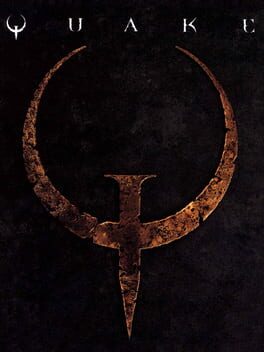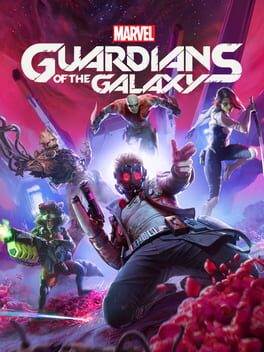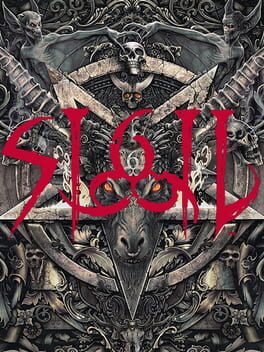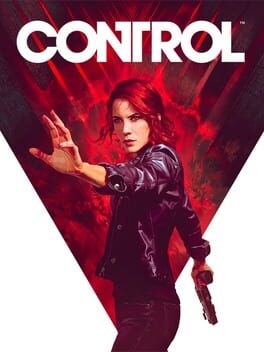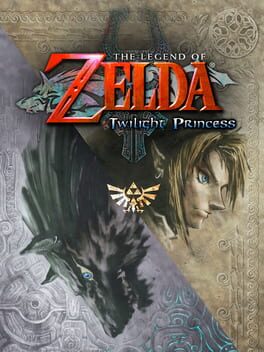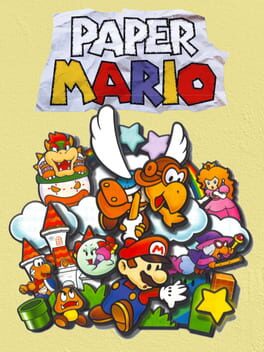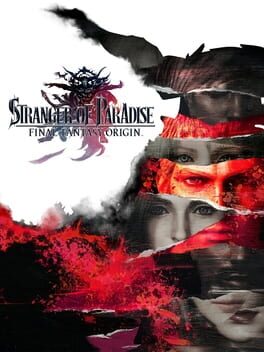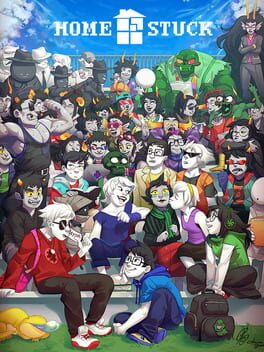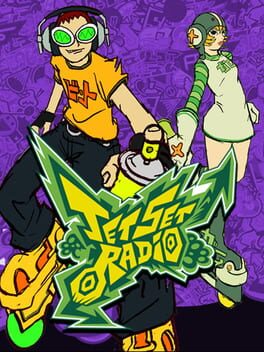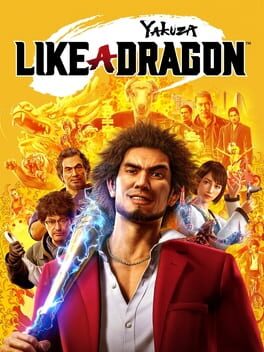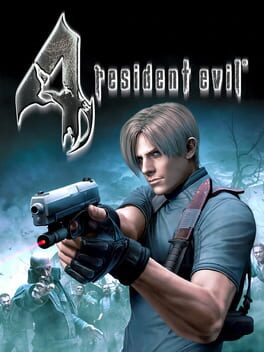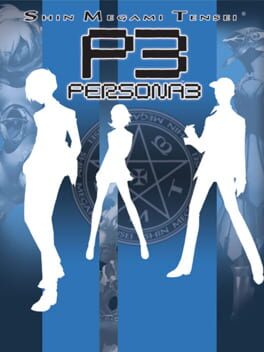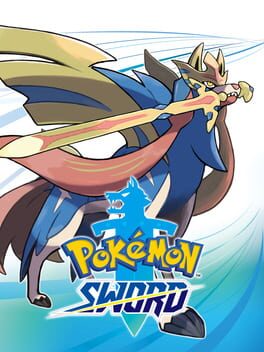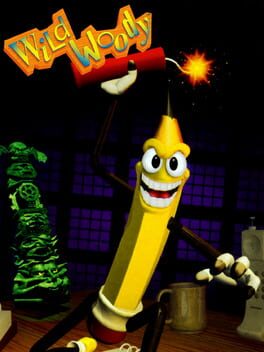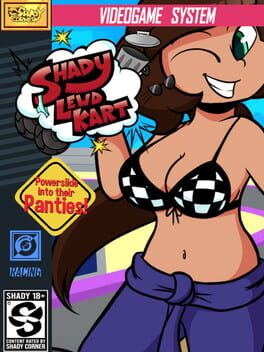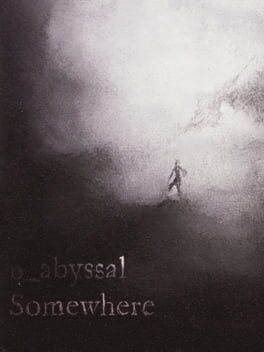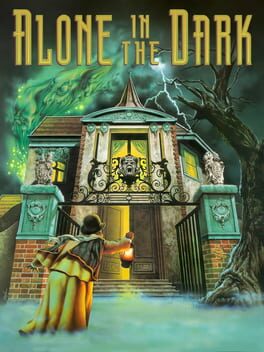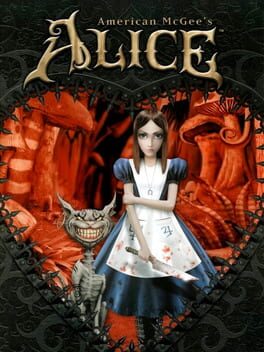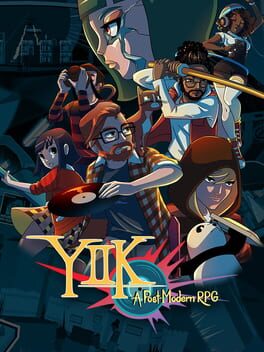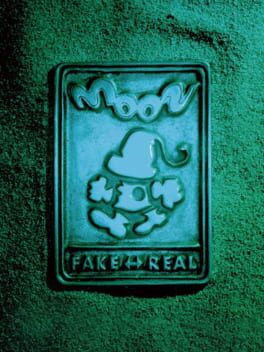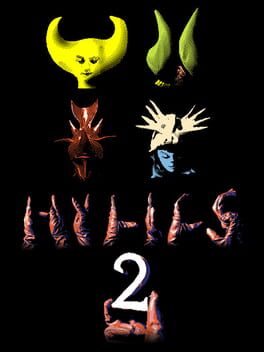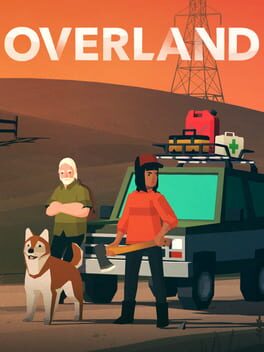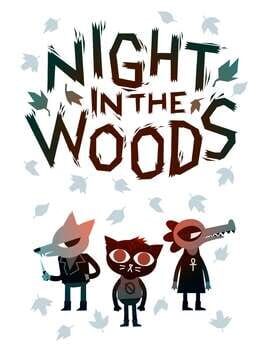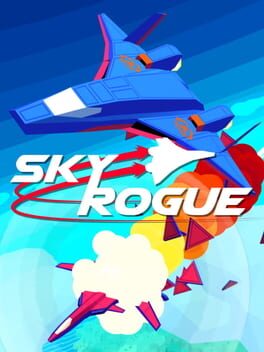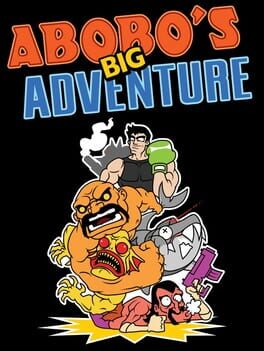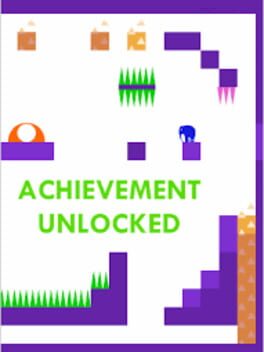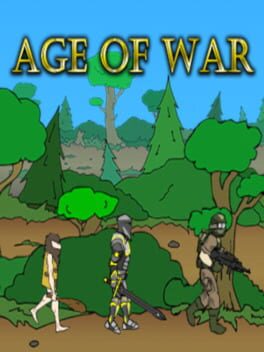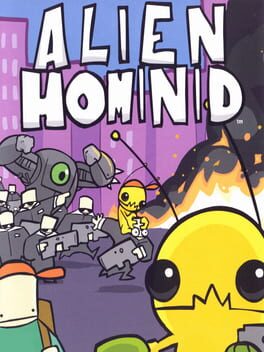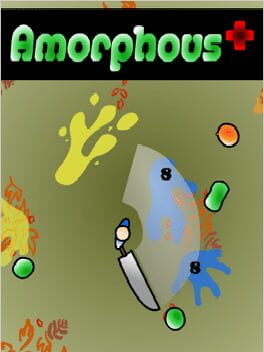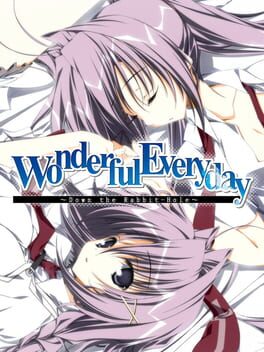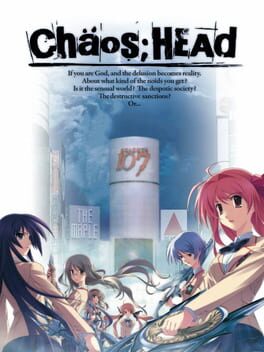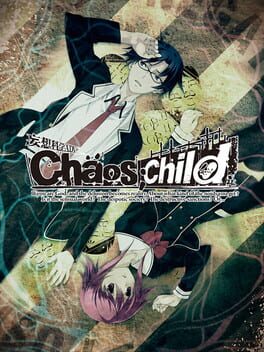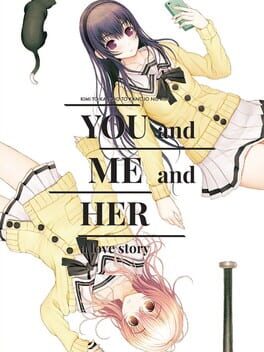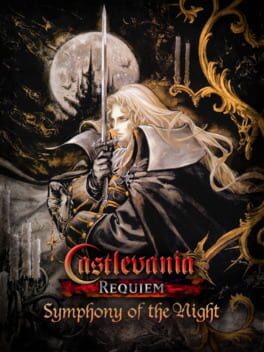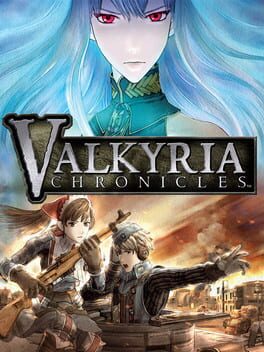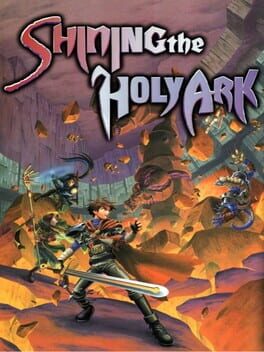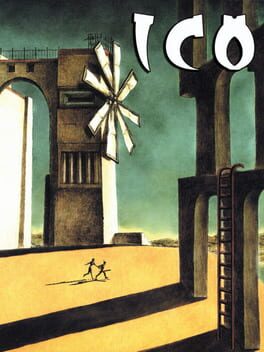Iru
BACKER
13549 reviews liked by Iru
Quake
1996
"wait - you haven't played quake?"
~almost everyone who i've gushed about this to game in the past few days
a little about me: i'm partial to industrial grit, my favorite doom games favor grimly edgy atmosphere over 80s thrash worship, i'm a big NIN fan and the downward spiral is one of my top 5 favorite albums. so this should be a no brainer, right?
well - yeah, actually. that's exactly right. throughout my playthrough all i could continually ask myself was, "why the fuck didn't i play this sooner?" and rightfully so. i think the reason quake has eluded me for so long is because its holistic reputation is eclipsed at this point by a diehard multiplayer community that i frankly don't give a shit about. i'm not much of a multiplayer enthusiast for anything - let alone tech-y arena shooters - and honestly i probably would've continued ignoring this absolute fucking masterpiece if not for my pressing curiosity towards trent reznor's involvement
that'd have been a huge mistake; quake is easily the best boomer shooter i've ever played
this is where i could talk about how i adore the weapons and their balancing, the general focus on straightforward maps with powerups everywhere, the difficulty being largely driven by how easy it is to kill yourself in tight spaces - or even the god tier ambient score that has just the right amounts of otherworldly screams and metallic chords strewn about - i COULD go into those things and we could be here for a considerable amount of time - but instead of doing any of that, i'm just going to say that the shambler is one of the greatest enemy designs in any fps. in fact, my feeling towards quake 1 can be summarized roughly with my thoughts on the shambler; he's absolutely perfect. i love this giant, dopey, teethy foreskin man in all his fleshy (not furry - fuck you) glory. and i haven't even begun to MENTION his timbs yet
my mans butters be outright otherworldly
~almost everyone who i've gushed about this to game in the past few days
a little about me: i'm partial to industrial grit, my favorite doom games favor grimly edgy atmosphere over 80s thrash worship, i'm a big NIN fan and the downward spiral is one of my top 5 favorite albums. so this should be a no brainer, right?
well - yeah, actually. that's exactly right. throughout my playthrough all i could continually ask myself was, "why the fuck didn't i play this sooner?" and rightfully so. i think the reason quake has eluded me for so long is because its holistic reputation is eclipsed at this point by a diehard multiplayer community that i frankly don't give a shit about. i'm not much of a multiplayer enthusiast for anything - let alone tech-y arena shooters - and honestly i probably would've continued ignoring this absolute fucking masterpiece if not for my pressing curiosity towards trent reznor's involvement
that'd have been a huge mistake; quake is easily the best boomer shooter i've ever played
this is where i could talk about how i adore the weapons and their balancing, the general focus on straightforward maps with powerups everywhere, the difficulty being largely driven by how easy it is to kill yourself in tight spaces - or even the god tier ambient score that has just the right amounts of otherworldly screams and metallic chords strewn about - i COULD go into those things and we could be here for a considerable amount of time - but instead of doing any of that, i'm just going to say that the shambler is one of the greatest enemy designs in any fps. in fact, my feeling towards quake 1 can be summarized roughly with my thoughts on the shambler; he's absolutely perfect. i love this giant, dopey, teethy foreskin man in all his fleshy (not furry - fuck you) glory. and i haven't even begun to MENTION his timbs yet
my mans butters be outright otherworldly
Despite growing up as a lifelong fan of Marvel Comics, I knew next to nothing about the Guardians of the Galaxy until their self-titled Marvel Cinematic Universe film in 2014. All of the Guardians films are some of the best to come out of the MCU. They’re a fun and surprisingly emotional trilogy of films featuring a really enjoyable cast of ragtag mercenaries turned found family. 2021’s Marvel’s Guardians of the Galaxy video game mostly manages to capture what makes those movies a good time. Unfortunately, for almost everything this game does right, there’s a caveat that brings it down.
You would think that the game being named after the whole team means that you’d eventually end up playing as each one of the Guardians, but that isn’t the case. In this game, you only play as their leader, Star-Lord. The entire game revolves around his capability as a leader. It focuses on testing his ability to lead the Guardians and making the best use out of all of their unique powers and talents, as well as maintaining morale throughout the entire team. This concept extends to every facet of gameplay, and I really like it. I think it's a great way to approach a video game about the Guardians.
The story is definitely its strongest point. The game has its own spin on the common themes and ideas that are explored in the movies- learning how to lead, deal with loss, the positives and negatives of a found family, and opening up to those around you. It takes place in its own separate continuity from the MCU, but you can tell that it draws almost all of its inspiration from James Gunn’s interpretation in terms of portraying the characters. It manages to be just as enjoyable and funny as the films, to the point where it's almost indistinguishable from them aside from certain plot details. It surprised me with one of its plot twists, and the story as a whole actually exceeded my expectations.
Levels involve you exploring all sorts of different alien worlds and getting into skirmishes with either the local wildlife or various factions seeking to stop you from saving the universe. Exploration is fairly linear and straightforward. You generally follow a path with some light platforming until you come across a roadblock that will require one or several of the Guardians’ abilities to remove or overcome it. Platforming can feel very stiff. Star-Lord’s jumps have almost no momentum and it can lead to some embarrassing falls at times. The roadblocks always require the same Guardian ability to get past them, so you never really have to think too long about what you need to do to progress. There were times when the way forward is through a tight crevice whose entrance can be hard to see, so I was left very confused on where to go several times when exploring. It was really frustrating when this happened.
Combat is essentially that of a third person shooter. You’ll be shooting enemies while issuing commands to the Guardians. Each Guardian has unique attacks and abilities that can be used to damage or incapacitate enemies in a variety of ways, and they each have their own situational uses. It takes a little getting used to at first. I didn’t realize how much the game wanted me to utilize the Guardians’ abilities initially so combat was really difficult for a while. You’re meant to constantly be using them, otherwise you won’t do that much damage to a majority of enemies in the game. Their abilities do have a cool down, but that cool down isn’t very long, so you have to constantly be watching for when they are available again. Star-Lord also has his own unique abilities with their own cooldown periods. It can get chaotic tracking everything on screen at once. You not only have to keep track of the large amounts of enemies you’ll be facing in a fight, but you also need to constantly keep an eye on your teammates, make sure they’re not incapacitated or downed, and watch for when they can use one of their special abilities again, while also being aware of when Star-Lord’s own abilities are available. It can be overwhelming, but you eventually get used to it.
When your backs are against the wall, you can Huddle Up, which is this game’s version of a power up mechanic. When activated, the Guardians will come together and make some comments regarding how the fight is going. You’ll then have dialogue options for a short speech that’s meant to rally and empower your team, and you have to pick the correct option based on their comments. If you pick the correct option, the entire team’s health is restored and they’re all temporarily buffed, but if you pick the wrong one, only Star-Lord gets buffed. I really love this mechanic, it’s one of the most creative power ups I’ve ever seen in video games, and really captures the theme of leadership the game is trying to convey.
In-between exploring worlds, you’ll also have an opportunity to just chill in the Guardians’ ship: The Milano. Here, you can bond with your teammates and speak with them to learn more about them, as well as discuss the unfolding events of the story. This game has a lot of dialogue, and I suspect that this might get on certain people’s nerves. Personally, I found the dialogue to be entertaining, funny, and endearing most of the time. However, something you notice over the course of the game is that the Guardians yell at each other a lot. They have to yell at each other during combat since fighting is loud, but they’re also yelling and arguing amongst each other frequently during the first half of the game. While overall I enjoyed the dialogue, I won’t lie, it can get grating at times.
The game is rather long, to the point where it really overstays its welcome. Levels tend to stretch on for quite a while, enemies can take a long time to put down which drags out combat, and you revisit the same locations multiple times. The experience gets rather repetitive the longer it goes on for. By the time I reached the end, I was very ready for it to be over. There is definitely a lot of fat that could’ve been trimmed.
Graphically, the game looks absolutely gorgeous, with a really colorful artstyle that I found very pleasing to look at. However, the game itself really lacks polish, with constant visual and audio glitches. A lot of animations won’t play correctly and cause certain characters to stutter wildly at times. Drax often won’t sheathe his knives when he’s supposed to, so when he crosses his arms, it looks like he’s impaling himself with them. Dialogue in cutscenes will frequently skip or just straight up not play at all. I will say that it runs super smoothly on PC, I never had any frame drops despite all of the chaos on the screen, but the other glitches were constant and distracting, especially the audio ones.
Aesthetically, the game emulates the films’ 1980s vibes, and they do a great job doing so. There are a ton of licensed rock, metal, and pop tracks from that time period that play either after you Huddle Up in combat, or on board the Milano, and they’re all mostly great picks. Though I do have to heckle the devs for their choice of an Iron Maiden song. Seriously, you had access to the entire Iron Maiden catalog and you chose Where Eagles Dare??? Not Run to the Hills, 2 Minutes to Midnight, Aces High, or The Trooper… you chose Eagles. It’s such a disappointing and mid choice. This has no real bearing on my overall opinion, I just really like Iron Maiden’s music and was a little sad at the song they chose to be in the game. They get bonus props for creating a fictional metal band with an entire album just for this game.
It’s hard to recommend this game unless you really love the Guardians of the Galaxy films. Overall, it’s a good time, but I wouldn’t say it's a great one. It’s not the best superhero game I’ve ever played, but it's far from the worst. It has a lot of heart and a unique approach to adapting these characters into a video game fashion. I’d love a sequel that trims the repetitive fat that made the game drag, and that polishes the numerous presentation bugs. If you’re not already a fan of the Guardians, I don’t think that this game will do too much to change your mind. If you are a fan, I think you’ll find that this game offers quite a bit to enjoy, enough to make it easier to overlook its flaws. It’s definitely not a game I’d pick up for full price though.
You would think that the game being named after the whole team means that you’d eventually end up playing as each one of the Guardians, but that isn’t the case. In this game, you only play as their leader, Star-Lord. The entire game revolves around his capability as a leader. It focuses on testing his ability to lead the Guardians and making the best use out of all of their unique powers and talents, as well as maintaining morale throughout the entire team. This concept extends to every facet of gameplay, and I really like it. I think it's a great way to approach a video game about the Guardians.
The story is definitely its strongest point. The game has its own spin on the common themes and ideas that are explored in the movies- learning how to lead, deal with loss, the positives and negatives of a found family, and opening up to those around you. It takes place in its own separate continuity from the MCU, but you can tell that it draws almost all of its inspiration from James Gunn’s interpretation in terms of portraying the characters. It manages to be just as enjoyable and funny as the films, to the point where it's almost indistinguishable from them aside from certain plot details. It surprised me with one of its plot twists, and the story as a whole actually exceeded my expectations.
Levels involve you exploring all sorts of different alien worlds and getting into skirmishes with either the local wildlife or various factions seeking to stop you from saving the universe. Exploration is fairly linear and straightforward. You generally follow a path with some light platforming until you come across a roadblock that will require one or several of the Guardians’ abilities to remove or overcome it. Platforming can feel very stiff. Star-Lord’s jumps have almost no momentum and it can lead to some embarrassing falls at times. The roadblocks always require the same Guardian ability to get past them, so you never really have to think too long about what you need to do to progress. There were times when the way forward is through a tight crevice whose entrance can be hard to see, so I was left very confused on where to go several times when exploring. It was really frustrating when this happened.
Combat is essentially that of a third person shooter. You’ll be shooting enemies while issuing commands to the Guardians. Each Guardian has unique attacks and abilities that can be used to damage or incapacitate enemies in a variety of ways, and they each have their own situational uses. It takes a little getting used to at first. I didn’t realize how much the game wanted me to utilize the Guardians’ abilities initially so combat was really difficult for a while. You’re meant to constantly be using them, otherwise you won’t do that much damage to a majority of enemies in the game. Their abilities do have a cool down, but that cool down isn’t very long, so you have to constantly be watching for when they are available again. Star-Lord also has his own unique abilities with their own cooldown periods. It can get chaotic tracking everything on screen at once. You not only have to keep track of the large amounts of enemies you’ll be facing in a fight, but you also need to constantly keep an eye on your teammates, make sure they’re not incapacitated or downed, and watch for when they can use one of their special abilities again, while also being aware of when Star-Lord’s own abilities are available. It can be overwhelming, but you eventually get used to it.
When your backs are against the wall, you can Huddle Up, which is this game’s version of a power up mechanic. When activated, the Guardians will come together and make some comments regarding how the fight is going. You’ll then have dialogue options for a short speech that’s meant to rally and empower your team, and you have to pick the correct option based on their comments. If you pick the correct option, the entire team’s health is restored and they’re all temporarily buffed, but if you pick the wrong one, only Star-Lord gets buffed. I really love this mechanic, it’s one of the most creative power ups I’ve ever seen in video games, and really captures the theme of leadership the game is trying to convey.
In-between exploring worlds, you’ll also have an opportunity to just chill in the Guardians’ ship: The Milano. Here, you can bond with your teammates and speak with them to learn more about them, as well as discuss the unfolding events of the story. This game has a lot of dialogue, and I suspect that this might get on certain people’s nerves. Personally, I found the dialogue to be entertaining, funny, and endearing most of the time. However, something you notice over the course of the game is that the Guardians yell at each other a lot. They have to yell at each other during combat since fighting is loud, but they’re also yelling and arguing amongst each other frequently during the first half of the game. While overall I enjoyed the dialogue, I won’t lie, it can get grating at times.
The game is rather long, to the point where it really overstays its welcome. Levels tend to stretch on for quite a while, enemies can take a long time to put down which drags out combat, and you revisit the same locations multiple times. The experience gets rather repetitive the longer it goes on for. By the time I reached the end, I was very ready for it to be over. There is definitely a lot of fat that could’ve been trimmed.
Graphically, the game looks absolutely gorgeous, with a really colorful artstyle that I found very pleasing to look at. However, the game itself really lacks polish, with constant visual and audio glitches. A lot of animations won’t play correctly and cause certain characters to stutter wildly at times. Drax often won’t sheathe his knives when he’s supposed to, so when he crosses his arms, it looks like he’s impaling himself with them. Dialogue in cutscenes will frequently skip or just straight up not play at all. I will say that it runs super smoothly on PC, I never had any frame drops despite all of the chaos on the screen, but the other glitches were constant and distracting, especially the audio ones.
Aesthetically, the game emulates the films’ 1980s vibes, and they do a great job doing so. There are a ton of licensed rock, metal, and pop tracks from that time period that play either after you Huddle Up in combat, or on board the Milano, and they’re all mostly great picks. Though I do have to heckle the devs for their choice of an Iron Maiden song. Seriously, you had access to the entire Iron Maiden catalog and you chose Where Eagles Dare??? Not Run to the Hills, 2 Minutes to Midnight, Aces High, or The Trooper… you chose Eagles. It’s such a disappointing and mid choice. This has no real bearing on my overall opinion, I just really like Iron Maiden’s music and was a little sad at the song they chose to be in the game. They get bonus props for creating a fictional metal band with an entire album just for this game.
It’s hard to recommend this game unless you really love the Guardians of the Galaxy films. Overall, it’s a good time, but I wouldn’t say it's a great one. It’s not the best superhero game I’ve ever played, but it's far from the worst. It has a lot of heart and a unique approach to adapting these characters into a video game fashion. I’d love a sequel that trims the repetitive fat that made the game drag, and that polishes the numerous presentation bugs. If you’re not already a fan of the Guardians, I don’t think that this game will do too much to change your mind. If you are a fan, I think you’ll find that this game offers quite a bit to enjoy, enough to make it easier to overlook its flaws. It’s definitely not a game I’d pick up for full price though.
My House
2023
This review contains spoilers
By now, you likely know what My House.wad is. What appears to be a simple recreation of a DOOM modder’s house is actually a slow descent into madness as the house gradually becomes more unsettling and takes you to liminal spaces that seem all but impossible. All you have to guide you is the aid of a haunting journal written by the person who developed the map, someone who was suffering from nightmares that are reflected by the various transformations the house undergoes.
My House.wad does an excellent job unnerving you and making you paranoid. The initial tiny, barely noticeable changes to the House as well as the music from DOOM II’s E1M1 that make you question your surroundings and your memory are extremely effective. It even randomly plays Discord ping sound effects. It’s a great build up for what’s to come and one of the best parts of the experience.
The different versions of the House that you explore, namely the School House, Bath House, Brutalist House, etc, are all beautifully designed. They tap into a sense of ethereal nostalgia in a way reminiscent of vaporwave art and music, one that really appeals to those who grew up in the late 90s and early 2000s. The different Houses have an incredible, unmatched and difficult to describe atmosphere to them. They also manage to tell aspects of a story while never really giving you the complete picture. The story of My House.wad is very much left up to interpretation, one that doesn’t really have any definitive conclusions or answers but gives you enough pieces of the puzzle to form your own.
Figuring out how to progress in My House.wad is very cryptic, too cryptic for its own good. Even with the journal providing you (obtuse) hints, chances are you’re not going to figure out what you need to do without a walkthrough. I don’t think the experience is really hindered for following one either, as long as it's spoiler free.
Despite my love for DOOM, I don’t really have much experience with custom wads, so a lot of My House.wad’s technical achievements with the game’s engine are lost on me. Still, for what it is, I think that it’s a great evolution and interpretation of DOOM’s core design philosophy. You’re still getting into fights with hordes of demons, you’re still hunting down various keys (though in this case, these keys are the different “artifacts” as opposed to DOOM’s traditional keys) and you’re still navigating weird mazes. I think My House.wad a testament to how strong DOOM’s core philosophy is. It can be interpreted in a completely different fashion, yet still be recognizable as DOOM.
My House.wad is complicated in so many different ways. It is, all at once, hair-raising, funny, beautiful, frustrating, and cathartic. It is a true work of art and an experience that definitely sticks with you. It feels like a celebration of the last twenty years of gaming and internet culture with its creepypasta origins in DOOM forums, its use of the character of Shrek (who was once a popular meme) and its own backrooms segment. It accomplishes so much even though it’s a free fangame, and is well deserving of all of its achievements.
My House.wad does an excellent job unnerving you and making you paranoid. The initial tiny, barely noticeable changes to the House as well as the music from DOOM II’s E1M1 that make you question your surroundings and your memory are extremely effective. It even randomly plays Discord ping sound effects. It’s a great build up for what’s to come and one of the best parts of the experience.
The different versions of the House that you explore, namely the School House, Bath House, Brutalist House, etc, are all beautifully designed. They tap into a sense of ethereal nostalgia in a way reminiscent of vaporwave art and music, one that really appeals to those who grew up in the late 90s and early 2000s. The different Houses have an incredible, unmatched and difficult to describe atmosphere to them. They also manage to tell aspects of a story while never really giving you the complete picture. The story of My House.wad is very much left up to interpretation, one that doesn’t really have any definitive conclusions or answers but gives you enough pieces of the puzzle to form your own.
Figuring out how to progress in My House.wad is very cryptic, too cryptic for its own good. Even with the journal providing you (obtuse) hints, chances are you’re not going to figure out what you need to do without a walkthrough. I don’t think the experience is really hindered for following one either, as long as it's spoiler free.
Despite my love for DOOM, I don’t really have much experience with custom wads, so a lot of My House.wad’s technical achievements with the game’s engine are lost on me. Still, for what it is, I think that it’s a great evolution and interpretation of DOOM’s core design philosophy. You’re still getting into fights with hordes of demons, you’re still hunting down various keys (though in this case, these keys are the different “artifacts” as opposed to DOOM’s traditional keys) and you’re still navigating weird mazes. I think My House.wad a testament to how strong DOOM’s core philosophy is. It can be interpreted in a completely different fashion, yet still be recognizable as DOOM.
My House.wad is complicated in so many different ways. It is, all at once, hair-raising, funny, beautiful, frustrating, and cathartic. It is a true work of art and an experience that definitely sticks with you. It feels like a celebration of the last twenty years of gaming and internet culture with its creepypasta origins in DOOM forums, its use of the character of Shrek (who was once a popular meme) and its own backrooms segment. It accomplishes so much even though it’s a free fangame, and is well deserving of all of its achievements.
Pseudoregalia
2023
I've enjoyed what I've played so far quite a bit, but the lack of a map is a real sore spot for me. The developer is currently working on an in-game map, so I've decided to just shelve this game for now and I plan to come back to it when the map update comes out.
As far as my current impressions go, movement is great once you get a few power ups, combat is kinda meh (might get better with upgrades?), and I love its retro aesthetic with its music and visuals. Nails the look of an early 3D platformer. Not much of a story from what I've seen.
As far as my current impressions go, movement is great once you get a few power ups, combat is kinda meh (might get better with upgrades?), and I love its retro aesthetic with its music and visuals. Nails the look of an early 3D platformer. Not much of a story from what I've seen.
Sigil
2019
Sigil is a set of nine new levels for the original DOOM by series co-creator John Romero, self-described as “The Unofficial Fifth Episode of DOOM”. These new levels are okay, but I wouldn’t say that I was the biggest fan of them.
I do like how elaborately designed they are. Finding the correct switches to open the way forward was really satisfying after being stuck for a while. It’s just that my least favorite types of levels in DOOM are the ones where you have to navigate in the dark, and Sigil has those kinds of levels in spades. You end up encountering enemies frequently in tight and cramped spaces, and you’re constantly ambushed by a ton of enemies all at once in areas where you can barely even see them because of hilariously cheap traps. You’ll end up dying frequently, and the levels can feel very tedious as a result.
I really like the use of textures that give this series of levels its own distinct feel, and I enjoyed the music a lot. Otherwise, I didn’t care too much for these levels. They aren't completely awful, I did enjoy a couple of the earlier levels. As a whole though, I didn’t really dig this expansion. I really hope that Sigil II tries something different from this with its levels.
I do like how elaborately designed they are. Finding the correct switches to open the way forward was really satisfying after being stuck for a while. It’s just that my least favorite types of levels in DOOM are the ones where you have to navigate in the dark, and Sigil has those kinds of levels in spades. You end up encountering enemies frequently in tight and cramped spaces, and you’re constantly ambushed by a ton of enemies all at once in areas where you can barely even see them because of hilariously cheap traps. You’ll end up dying frequently, and the levels can feel very tedious as a result.
I really like the use of textures that give this series of levels its own distinct feel, and I enjoyed the music a lot. Otherwise, I didn’t care too much for these levels. They aren't completely awful, I did enjoy a couple of the earlier levels. As a whole though, I didn’t really dig this expansion. I really hope that Sigil II tries something different from this with its levels.
The majority of the past few games developed by RGG Studios have mostly been a transition for the world of the Yakuza/Like a Dragon franchise. Kazuma Kiryu, who had been the series’ extremely popular main protagonist for nearly a decade, was essentially retired from starring in the mainline games in 2016’s Yakuza 6: The Song of Life, after being featured as the lead or co-lead in numerous entries of the series. The mainline games then shifted genres entirely with 2020’s Yakuza: Like a Dragon, going from a 3D beat-’em-up to a turn-based RPG, while the beat-’em-up gameplay was delegated to the new detective-themed Judgment spin-off series. These games each featured fantastic new protagonists with their own charming supporting casts. It felt like RGG Studios was testing the waters with these new characters and approaches to gameplay, and since the Judgment games and Yakuza: Like a Dragon went on to be successful despite not starring Kiryu, it was time to officially pass on the torch to the new generation. RGG Studios does just that with Like a Dragon: Infinite Wealth. It’s a seminal entry for the series that eclipses just about everything that came before it in scope.
The franchise has always been defined by its large and elaborate overworlds that are filled with stunning amounts of content to discover, including substories, mini games, mini bosses, and an assortment of other fun challenges and things to do. Infinite Wealth somehow manages to take that standard to the next level. The game primarily takes place in Honolulu, Hawaii, one of the largest overworlds the series has ever seen, in addition to including the cities of Ijincho and Kamurocho from the previous games. Each of these locations has an abundance of things to do, to the point where it’s honestly a little bit overwhelming. The first half of the game in particular has several back-to-back tutorials regarding how its systems and side content works and it can be a bit difficult keeping track of it all. This is a very enormous and lengthy game though, and as long as you give yourself time and breathing room, you’ll eventually get used to… most of it.
The turn-based combat is heavily improved from the previous game, with a ton of quality of life changes. A new and vital element of combat is that you now have a limited range you can move your characters in. This allows you to position your characters in order to make the most effective use of their special attacks, adding a whole extra layer of depth to the combat. Drink Links and Bonds, which are conversations that you can have with your allies that lets you get to know them better, are a lot more important in this game. Completing them unlocks additional combo attacks, which you can perform by knocking enemies into your allies, as well as chain attacks, where your allies will perform automatic follow-up attacks after landing one of your own. I can’t stress enough how much I love these. It is indescribably satisfying having all of these different methods of attacking an enemy come together all at once. Even if your party is outnumbered, it feels like you constantly have the jump on every enemy you come across.
Despite all of the quality of life changes to combat, there is one element of it that I found to be lacking. Perfect Guards return from the previous game, where timing a button press to the enemy’s attack allows you to mitigate some damage. It has been some time since I last played Yakuza 7, so I can’t trust my memory on this, but it feels like pulling off perfect guards in Infinite Wealth is a lot harder than the previous game. The timing of the button press won’t always align with the enemy’s attack and it can be difficult determining when you’re actually supposed to press the button. In addition to that, the camera won’t always shift to the character that’s getting attacked in time for you to see the enemy’s attack itself, so you’ll have to guess when you’re supposed to press the button. This is especially frequent with attacks where the enemy will quickly bounce from ally to ally, though thankfully, there aren’t very many enemies in the game that do this, it’s mostly reserved for boss fights.
In addition to the combat, there are a bunch of other quality of life changes that I really want to highlight. The job system has been changed so that you can choose any skill from any job and assign them to a character, which allows for an insane level of character customization. Enemies spotting you in the overworld doesn’t immediately start a battle. Now a battle will only start if you remain in their field of vision for a certain amount of time, or if you just run up to them. You can also immediately take out lower level enemies with the Smackdown option, which allows you to instantly win the fight and can help save time. These are all godsend changes that I’m so thankful for.
I didn’t engage with all of the side content because there is just so much of it, but I did want to highlight Dondoko Island. This is the equivalent to the Ichiban Holdings mini game from 7. This single mini game honestly feels like a fully-fledged spin-off title in its own right. It takes extremely obvious inspiration from Animal Crossing: New Horizons where you’re customizing your own island resort by breaking trees and rocks, collecting materials, and placing all sorts of different furnishings and attractions all over the island. You can invite several guests to experience your island where they’ll spend Dondoko Bucks, a currency which can be converted into actual money. While you won’t break the economy to the same extent that you could in Yakuza 7, you get pretty damn close, and it’s a side activity that’s not only very worthwhile, but also engaging and genuinely relaxing.
Infinite Wealth’s story left me with a lot of mixed, but mostly positive feelings. I wasn’t as moved emotionally by this game as I was with Yakuza 7, which by the end had me in tears. Despite that, I still think the story is really good overall. It handles both Ichiban and Kiryu’s stories extremely well. Ichiban’s importance to the story isn’t diminished or overshadowed by Kiryu, which was a worry of mine going into this game. A major plot point is that Kiryu is suffering from cancer and doesn’t have much longer to live. One of Kiryu’s biggest flaws as a character is that he is always undertaking the brunt of burdens unto himself, rarely letting people in and sharing his own personal struggles with others. While he did originally meet Ichiban in Yakuza 7, which left a huge impression on him, it isn’t until here in Infinite Wealth where he finally starts sharing the burden with not just Ichiban, but the rest of the playable cast as well. It’s not just fantastic character development, but it really feels like a passing of the torch between these characters. The biggest downside to the story I feel is that it doesn’t do the best job at balancing the party members and the roles they play in the game. A few characters like Zhao and Joon Gi Han feel like they’re kind of just along for the ride. You still get to spend time with them with the Drink Links and Bond system though, so it’s not the biggest deal.
The game celebrates Kiryu as well as the franchise’s legacy with side content exclusive to him. I don’t want to give too much of this away, but if you’re a fan of the series, then this side content should be considered essential. It’s not just a trip down memory lane, but a way of tying up some loose ends of the series as well. Still, I really want to talk about it as well as the ending to the game, so I’ve made a spoiler Pastebin where I discuss them.
I feel like I’ve barely scratched the surface of the game with this review. Infinite Wealth is really the perfect title for this game, as it really does feel like it provides an endless treasure trove of sheer enjoyment. Time just stopped existing for me when I played it. I was locked in, having way too much fun and I couldn’t put it down. It’s a wonderful celebration of not just the series’ past, but its future as well. It’s truly incredible, and I genuinely cannot fathom how RGG Studios could possibly make a game that’s bigger and richer than this. It is overwhelmingly phenomenal.
The franchise has always been defined by its large and elaborate overworlds that are filled with stunning amounts of content to discover, including substories, mini games, mini bosses, and an assortment of other fun challenges and things to do. Infinite Wealth somehow manages to take that standard to the next level. The game primarily takes place in Honolulu, Hawaii, one of the largest overworlds the series has ever seen, in addition to including the cities of Ijincho and Kamurocho from the previous games. Each of these locations has an abundance of things to do, to the point where it’s honestly a little bit overwhelming. The first half of the game in particular has several back-to-back tutorials regarding how its systems and side content works and it can be a bit difficult keeping track of it all. This is a very enormous and lengthy game though, and as long as you give yourself time and breathing room, you’ll eventually get used to… most of it.
The turn-based combat is heavily improved from the previous game, with a ton of quality of life changes. A new and vital element of combat is that you now have a limited range you can move your characters in. This allows you to position your characters in order to make the most effective use of their special attacks, adding a whole extra layer of depth to the combat. Drink Links and Bonds, which are conversations that you can have with your allies that lets you get to know them better, are a lot more important in this game. Completing them unlocks additional combo attacks, which you can perform by knocking enemies into your allies, as well as chain attacks, where your allies will perform automatic follow-up attacks after landing one of your own. I can’t stress enough how much I love these. It is indescribably satisfying having all of these different methods of attacking an enemy come together all at once. Even if your party is outnumbered, it feels like you constantly have the jump on every enemy you come across.
Despite all of the quality of life changes to combat, there is one element of it that I found to be lacking. Perfect Guards return from the previous game, where timing a button press to the enemy’s attack allows you to mitigate some damage. It has been some time since I last played Yakuza 7, so I can’t trust my memory on this, but it feels like pulling off perfect guards in Infinite Wealth is a lot harder than the previous game. The timing of the button press won’t always align with the enemy’s attack and it can be difficult determining when you’re actually supposed to press the button. In addition to that, the camera won’t always shift to the character that’s getting attacked in time for you to see the enemy’s attack itself, so you’ll have to guess when you’re supposed to press the button. This is especially frequent with attacks where the enemy will quickly bounce from ally to ally, though thankfully, there aren’t very many enemies in the game that do this, it’s mostly reserved for boss fights.
In addition to the combat, there are a bunch of other quality of life changes that I really want to highlight. The job system has been changed so that you can choose any skill from any job and assign them to a character, which allows for an insane level of character customization. Enemies spotting you in the overworld doesn’t immediately start a battle. Now a battle will only start if you remain in their field of vision for a certain amount of time, or if you just run up to them. You can also immediately take out lower level enemies with the Smackdown option, which allows you to instantly win the fight and can help save time. These are all godsend changes that I’m so thankful for.
I didn’t engage with all of the side content because there is just so much of it, but I did want to highlight Dondoko Island. This is the equivalent to the Ichiban Holdings mini game from 7. This single mini game honestly feels like a fully-fledged spin-off title in its own right. It takes extremely obvious inspiration from Animal Crossing: New Horizons where you’re customizing your own island resort by breaking trees and rocks, collecting materials, and placing all sorts of different furnishings and attractions all over the island. You can invite several guests to experience your island where they’ll spend Dondoko Bucks, a currency which can be converted into actual money. While you won’t break the economy to the same extent that you could in Yakuza 7, you get pretty damn close, and it’s a side activity that’s not only very worthwhile, but also engaging and genuinely relaxing.
Infinite Wealth’s story left me with a lot of mixed, but mostly positive feelings. I wasn’t as moved emotionally by this game as I was with Yakuza 7, which by the end had me in tears. Despite that, I still think the story is really good overall. It handles both Ichiban and Kiryu’s stories extremely well. Ichiban’s importance to the story isn’t diminished or overshadowed by Kiryu, which was a worry of mine going into this game. A major plot point is that Kiryu is suffering from cancer and doesn’t have much longer to live. One of Kiryu’s biggest flaws as a character is that he is always undertaking the brunt of burdens unto himself, rarely letting people in and sharing his own personal struggles with others. While he did originally meet Ichiban in Yakuza 7, which left a huge impression on him, it isn’t until here in Infinite Wealth where he finally starts sharing the burden with not just Ichiban, but the rest of the playable cast as well. It’s not just fantastic character development, but it really feels like a passing of the torch between these characters. The biggest downside to the story I feel is that it doesn’t do the best job at balancing the party members and the roles they play in the game. A few characters like Zhao and Joon Gi Han feel like they’re kind of just along for the ride. You still get to spend time with them with the Drink Links and Bond system though, so it’s not the biggest deal.
The game celebrates Kiryu as well as the franchise’s legacy with side content exclusive to him. I don’t want to give too much of this away, but if you’re a fan of the series, then this side content should be considered essential. It’s not just a trip down memory lane, but a way of tying up some loose ends of the series as well. Still, I really want to talk about it as well as the ending to the game, so I’ve made a spoiler Pastebin where I discuss them.
I feel like I’ve barely scratched the surface of the game with this review. Infinite Wealth is really the perfect title for this game, as it really does feel like it provides an endless treasure trove of sheer enjoyment. Time just stopped existing for me when I played it. I was locked in, having way too much fun and I couldn’t put it down. It’s a wonderful celebration of not just the series’ past, but its future as well. It’s truly incredible, and I genuinely cannot fathom how RGG Studios could possibly make a game that’s bigger and richer than this. It is overwhelmingly phenomenal.
Control
2019
I really wanted to like Control. It has a very intriguing story premise, and a striking art and cinematic direction. Its biggest problem is with its combat, which makes up most of the content in the game. Combat has some rather frustrating issues, and as a result, a majority of the game isn’t especially enjoyable to play. I eventually got to a point where I realized I was forcing myself through it, and decided I didn’t want to commit to it anymore.
Control has an intricate setup that can be difficult to summarize. It takes place inside of a location known as “The Oldest House”, a surreal magical office building that is a gateway to other dimensions and serves as the headquarters of the Federal Bureau of Control, a government organization dedicated to the research and combating of the supernatural. It is being invaded by a paranormal force referred to as “The Hiss” which is infecting members of its staff and security forces and is wreaking havoc all throughout the building. The Bureau holds many dangerous magical artifacts, referred to as “Objects of Power” within the Oldest House, and the invasion of the Hiss means that these objects can potentially be released to the public, which poses a great danger to humanity. You play as Jesse, a telekinetic woman who has arrived at the Oldest House in the midst of all of this in search of her brother, whom she suspects is being held captive by the Bureau. You primarily navigate the dreamlike and labyrinthian Oldest House while battling Hiss-infected enemies with a combination of a supernatural gun that regenerates ammo and Jesse’s telekinetic powers.
Combat is decent, but I don’t think it’s varied enough to remain interesting throughout the entire game. You’re introduced to your core abilities and a majority of enemies fairly early, so you’ll go through very long stretches of the game fighting hordes of the exact same enemies over and over again. I do mean hordes of enemies, because you’ll tend to face a large amount of enemies in waves over the course of a single encounter. This causes combat to drag out and become tedious as a result. There are also several factors outside of your control that bring down combat even further.
Fights are frequently visually cluttered due to a combination of this game’s lighting and the destructible environments constantly obscuring enemies and incoming projectiles. In areas where light is strong, it washes the environment out, while dark areas are too dark, making it difficult to be aware of your surroundings. It’s especially frustrating during fights with the Hiss, because I would be getting pelted with projectiles or shot at with rockets and grenades by enemies whose location I just cannot determine because of the harsh red lighting in areas where the Hiss infection is at its strongest. It makes it feel like the game is randomly blowing you up or killing you. It’s even worse if you’re close to death because the screen will turn red when you have low health, making it even harder to see. There are pits you can fall into and ledges you can fall off of in areas where you’ll be fighting in, and falling down these just adds to the frustration of the lack of visual clarity in combat. If my issues with the combat weren’t there, I’d enjoy the game a lot more. In areas where I can see what’s going on, combat is at its best and is actually pretty fluid. Its fun managing your gun's ammo and your telekinetic abilities, using them in conjunction with one another.
Combat is what makes up the vast majority of this game, there’s not much else to it besides the occasional simplistic puzzle and surreal set piece. The layout of the Oldest House is intentionally convoluted, but locations are sign posted and it’s not super difficult figuring out where you need to go, making exploration not particularly difficult or engaging. You’re mostly just going from point A to point B while clearing out the Hiss on your way there. Since this game is mostly combat, and I had such serious issues with the combat, I decided to put the game down. I got about three quarters into it and I realized I was just forcing myself through it while not having a great time.
The setting and story of Control were primarily what kept me invested, but the issues with the combat are keeping me from progressing any further with it. The main reason I picked up Control is that I heard it has ties with the newest Alan Wake game, but at this point I think I’d rather just look up how the story plays out. Maybe there are mods out there that help to reduce the visual clutter, but I’m not invested in Control enough to really look into them. I’ve got other games I’d rather play.
Control has an intricate setup that can be difficult to summarize. It takes place inside of a location known as “The Oldest House”, a surreal magical office building that is a gateway to other dimensions and serves as the headquarters of the Federal Bureau of Control, a government organization dedicated to the research and combating of the supernatural. It is being invaded by a paranormal force referred to as “The Hiss” which is infecting members of its staff and security forces and is wreaking havoc all throughout the building. The Bureau holds many dangerous magical artifacts, referred to as “Objects of Power” within the Oldest House, and the invasion of the Hiss means that these objects can potentially be released to the public, which poses a great danger to humanity. You play as Jesse, a telekinetic woman who has arrived at the Oldest House in the midst of all of this in search of her brother, whom she suspects is being held captive by the Bureau. You primarily navigate the dreamlike and labyrinthian Oldest House while battling Hiss-infected enemies with a combination of a supernatural gun that regenerates ammo and Jesse’s telekinetic powers.
Combat is decent, but I don’t think it’s varied enough to remain interesting throughout the entire game. You’re introduced to your core abilities and a majority of enemies fairly early, so you’ll go through very long stretches of the game fighting hordes of the exact same enemies over and over again. I do mean hordes of enemies, because you’ll tend to face a large amount of enemies in waves over the course of a single encounter. This causes combat to drag out and become tedious as a result. There are also several factors outside of your control that bring down combat even further.
Fights are frequently visually cluttered due to a combination of this game’s lighting and the destructible environments constantly obscuring enemies and incoming projectiles. In areas where light is strong, it washes the environment out, while dark areas are too dark, making it difficult to be aware of your surroundings. It’s especially frustrating during fights with the Hiss, because I would be getting pelted with projectiles or shot at with rockets and grenades by enemies whose location I just cannot determine because of the harsh red lighting in areas where the Hiss infection is at its strongest. It makes it feel like the game is randomly blowing you up or killing you. It’s even worse if you’re close to death because the screen will turn red when you have low health, making it even harder to see. There are pits you can fall into and ledges you can fall off of in areas where you’ll be fighting in, and falling down these just adds to the frustration of the lack of visual clarity in combat. If my issues with the combat weren’t there, I’d enjoy the game a lot more. In areas where I can see what’s going on, combat is at its best and is actually pretty fluid. Its fun managing your gun's ammo and your telekinetic abilities, using them in conjunction with one another.
Combat is what makes up the vast majority of this game, there’s not much else to it besides the occasional simplistic puzzle and surreal set piece. The layout of the Oldest House is intentionally convoluted, but locations are sign posted and it’s not super difficult figuring out where you need to go, making exploration not particularly difficult or engaging. You’re mostly just going from point A to point B while clearing out the Hiss on your way there. Since this game is mostly combat, and I had such serious issues with the combat, I decided to put the game down. I got about three quarters into it and I realized I was just forcing myself through it while not having a great time.
The setting and story of Control were primarily what kept me invested, but the issues with the combat are keeping me from progressing any further with it. The main reason I picked up Control is that I heard it has ties with the newest Alan Wake game, but at this point I think I’d rather just look up how the story plays out. Maybe there are mods out there that help to reduce the visual clutter, but I’m not invested in Control enough to really look into them. I’ve got other games I’d rather play.
Persona 3 Reload
2024
This review will mainly be evaluating Persona 3 Reload as a remake. I replayed and wrote a review on Persona 3 FES late last year, specifically so I could best compare it to Reload. If you’re interested in my thoughts on that version of the game, you can check out the review here. I do consider it to be a companion piece to this review, but it is rather long, and not at all required to understand my thoughts regarding Reload. This review also turned out to be rather lengthy, so don’t feel obligated to read both.
Persona 3 has always been a pretty contentious game amongst fans of the series. The story is generally well-loved, but almost everything regarding its gameplay and structure have always had a mixed reception. It doesn’t help that there are multiple versions of the game that have been released over the years, with content exclusive to each version, as well as their own pros and cons. Persona 3 FES was a second version of the game that released on the PlayStation 2, and included an additional campaign known as The Answer, which served as an epilogue to the original story. It also had several minor changes and additions to the original game, which was now referred to as The Journey. Then, there was Persona 3 Portable for the PlayStation Portable, which introduced its own unique additions, including a female protagonist that had exclusive new story content to her. However, to compensate for being on a platform with weaker hardware, many elements of the original game had to be changed or scaled back. Several 3D environments were removed, anime cutscenes were replaced with in-engine ones, and it lacked The Answer altogether. As such, there was no “definitive” version of Persona 3, one that included all of the content introduced in FES and Portable without any of the drawbacks of either version. This is what made the notion of a full-on modern day remake of Persona 3 an exciting prospect.
For better, and in some cases worse, Persona 3 Reload is an extremely faithful remake. It maintains the core structure of the original game, and it delights and surprises with its own excellent new additions and quality of life changes to the story, combat, Persona fusions, social links, and Tartarus. In other ways, it feels lacking in certain regards, specifically the presentation of certain areas in the game. It does incorporate various features that were introduced in both FES and Portable, but it currently doesn’t include the biggest draws of both titles: The Answer and the female protagonist. While The Answer will be an upcoming DLC release, the staff has sadly confirmed that FeMC will not be added. The lack of FeMC is a huge bummer, and making The Answer DLC when the game already costs $70 is not at all a good look. Though I have to admit: in all honesty, I can’t really see a world where something like The Answer isn't made into DLC in the current video game business landscape. I’m not defending the decision to make The Answer DLC, it's just a sad fact of the industry. If The Answer being DLC and the absence of FeMC is enough to convince you that the game isn’t worth it, well, I think that’s a reasonable position to have. Despite this, however, I do think that Reload still provides an excellent time thanks to those aforementioned additions and quality of life changes that genuinely enrich the original game.
The additions that were by far my absolute favorite were the ones that dealt with the story. The male party members did not have social links in the original game, so Reload introduces new “Link Episodes”, which function similarly to social links and give more insight into how the events of the story are affecting these characters. I think they’re written excellently, and fit very naturally within the structure of the game and its narrative. Shinjiro’s in particular is especially moving given the context of his role in the story. You can also do activities with your party members when you return to the dorm in the evening, such as growing plants on the dorm’s rooftop, studying together, watching TV, or making food in the kitchen. These hangouts feature special dialogue where you bond with your friends, and they also provide additional gameplay bonuses, such as increasing your social stats or providing exclusive recovery and support items. Persona 3 has one of my favorite video game casts of all time, and being able to spend more time with the cast like this was an absolute delight and very heartwarming.
The rest of the main story doesn’t really see much in terms of drastic changes. Everything unfolds the same way it does in the original. However, there is one change to the story that I am not a fan of. Yukari is noticeably a lot nicer and far less stand-offish compared to how she was portrayed in the original. They didn’t make any major changes to her lines as far as I could tell, but she’s a lot less angry and aggressive in her delivery. When she chastises Junpei for example, she sounds disappointed and tired as opposed to irritated or annoyed. I’m not sure if this is more in-line with what was intended by her creators or not, but I’d be shocked if it was. I understand a lot of people have gripes with Yukari’s attitude in the original game, but I think that’s missing the point. Yukari gradually overcoming her bitchiness, opening up, and becoming close friends with the people she had problems with was a big part of her development as a character, and I think that minimizing that aspect of her personality was a mistake.
Combat has been heavily modified. In response to the backlash of being unable to directly control party members in the PlayStation 2 versions of Persona 3, Persona 4 re-introduced the ability to do so, and Atlus have kept this option in all of the releases/revisions for every mainline game in the series ever since, including here in Reload. The tactics system has always been a controversial and heavily debated topic, with people constantly arguing over whether or not the system even worked properly. I discussed this in more detail in my review of FES, but to reiterate my opinion here: I thought that the tactics system in FES generally worked as intended outside of minor instances. I actually like the tactics system a lot, and I thought that it made the characters feel a bit more real. However, the security of being able to pick and choose which skills to use at any time was the reason why I never used the tactics system again since direct commands were introduced in Persona 4.
Long time Persona modder MeovvCAT has explained in a couple of Tweets that the tactics system was heavily gutted in Persona 4 and hasn’t functioned properly in pretty much any Persona game ever since. I think that is why there’s an overall negative perception towards the tactics system. MeovvCAT has also mentioned here that problems with the tactics system have carried over to Reload as well, and while the vast majority of the people who play these games use direct commands, I don’t think that it’s too controversial to say that I think the tactics system should still be fixed, and the fact that it hasn’t in Reload after there have been problems with it for so many years is pretty disappointing. I do miss how the AI party members in FES felt like they had a sense of individuality, but I was still able to immensely enjoy combat in Reload with the direct commands regardless.
In comparison to FES, combat in Reload feels significantly easier. I typically play games on normal difficulty, but for Reload, I actually cranked it up to hard and was able to get through it just fine. It was still challenging at points, but I think playing through FES a few months ago actually prepared me very well for Reload’s hard mode. The Shift mechanic, which is equivalent to the Baton Pass from Persona 5, goes a long way towards making fights easier. At the same time though, it’s really satisfying using this mechanic to keep the opponent from being able to do anything. What I feel is the most notable addition to combat are the new Therugy attacks. These are big cinematic special attacks that the cast can perform which are extremely strong, especially if the Therugy has an element the enemy is weak to, because it can knock the enemy down and leave them open for an All-Out Attack. They can trivialize bosses on normal, but I found that they were absolutely necessary against red Shadows and bosses on hard. They’re also beautifully animated and a great spectacle to watch.
Fusing Personas has largely been simplified. You’re no longer capable of fusing more than two Personas at a time. You can now search to see what you can create with the Personas you currently have. There are still special Personas in the game like Thanatos that you can create by fusing a set of certain Personas together, and the game now tells you what Personas are needed to create these more powerful special Personas, and what level you need to be at before you can make them. Honestly, I can’t see these changes as anything but improvements. While it wasn’t too hard to get by with the original system, I think that these changes make it more encouraging and less of a headache to experiment with fusing. In FES, it felt like fusing specific Personas was impossible unless you had a guide handy because of the overwhelming amount of different types of combinations. In Reload, I felt a lot more encouraged to go out and make these special Personas in particular since now I know what to look for and when.
The only changes Social Links see are that they’re fully voiced, and you can now complete female characters’ Social Links without dating them. This was a very welcome change and I’m glad they added it. The rest of the Social Links are pretty much the same, including the more infamous ones like Kenji and “Maya”. I feel like these probably could’ve been changed, but it is what it is. They’re a product of their time, and you technically don’t have to do them.
Tartarus functions in much the same fashion, but it’s been given a much needed facelift. Each block of Tartarus now has its own small group of floor layouts, as opposed to FES, which felt like it used the same small number of layouts throughout the whole game. Tartarus has also been supplemented with a lot of new features and events that make the climb a lot less monotonous. Since this review is already as long as it is, I’m not going to list them all, but these new events are introduced gradually as you make it higher and higher in Tartarus. I think spreading them out the way the game does goes a long way towards enriching Tartarus and making it feel a lot less repetitive. It’s still not quite clear how much you should grind in Tartarus before you fight the boss at the end of the month, but you now have the option to go back to a specific date if you find yourself stuck.
While the game does mostly look great with its new combat animations and its tremendously sleek UI, the game’s presentation is lacking in a few areas. The lighting in general looks very off, and this was a very common complaint amongst Reload’s most vocal detractors. The game as a whole just looks very bright, and while I do agree that it doesn’t look especially good, you can simply turn the game’s brightness down, which fixes the issue. I’m not going to lie, I find this complaint to be very overblown. What I don’t think is overblown however, is how the game handles NPC crowds. I think that areas where there are a lot of NPCs like the school and Club Escapade don’t look good at all. The NPCs don’t have facial features and barely animate. It looks especially bad in Club Escapade where everyone just looks like they’re frozen in time, barely moving or dancing at all. This is more of a minor complaint in the grand scheme of things, as there aren’t very many crowded areas in Persona 3, but I do think it is something worth acknowledging.
I’m probably in the minority, but I never felt that Persona 3 really needed a full-on remake. FES used to be one of my favorite games of all time, despite being a little rough around the edges. The thing is, Reload manages to smooth most of those edges out. I don’t feel like Reload as a whole is significantly better than FES, but I really do love what it adds to supplement the original experience, especially the new story content. Reload manages to be a great new version of Persona 3 to enjoy. It does suck that The Answer is a DLC expansion and that FeMC won't be coming to the game at all, but Reload's own unique additions really made me happy, and I think this version has enough heart that it justifies its existence.
Persona 3 has always been a pretty contentious game amongst fans of the series. The story is generally well-loved, but almost everything regarding its gameplay and structure have always had a mixed reception. It doesn’t help that there are multiple versions of the game that have been released over the years, with content exclusive to each version, as well as their own pros and cons. Persona 3 FES was a second version of the game that released on the PlayStation 2, and included an additional campaign known as The Answer, which served as an epilogue to the original story. It also had several minor changes and additions to the original game, which was now referred to as The Journey. Then, there was Persona 3 Portable for the PlayStation Portable, which introduced its own unique additions, including a female protagonist that had exclusive new story content to her. However, to compensate for being on a platform with weaker hardware, many elements of the original game had to be changed or scaled back. Several 3D environments were removed, anime cutscenes were replaced with in-engine ones, and it lacked The Answer altogether. As such, there was no “definitive” version of Persona 3, one that included all of the content introduced in FES and Portable without any of the drawbacks of either version. This is what made the notion of a full-on modern day remake of Persona 3 an exciting prospect.
For better, and in some cases worse, Persona 3 Reload is an extremely faithful remake. It maintains the core structure of the original game, and it delights and surprises with its own excellent new additions and quality of life changes to the story, combat, Persona fusions, social links, and Tartarus. In other ways, it feels lacking in certain regards, specifically the presentation of certain areas in the game. It does incorporate various features that were introduced in both FES and Portable, but it currently doesn’t include the biggest draws of both titles: The Answer and the female protagonist. While The Answer will be an upcoming DLC release, the staff has sadly confirmed that FeMC will not be added. The lack of FeMC is a huge bummer, and making The Answer DLC when the game already costs $70 is not at all a good look. Though I have to admit: in all honesty, I can’t really see a world where something like The Answer isn't made into DLC in the current video game business landscape. I’m not defending the decision to make The Answer DLC, it's just a sad fact of the industry. If The Answer being DLC and the absence of FeMC is enough to convince you that the game isn’t worth it, well, I think that’s a reasonable position to have. Despite this, however, I do think that Reload still provides an excellent time thanks to those aforementioned additions and quality of life changes that genuinely enrich the original game.
The additions that were by far my absolute favorite were the ones that dealt with the story. The male party members did not have social links in the original game, so Reload introduces new “Link Episodes”, which function similarly to social links and give more insight into how the events of the story are affecting these characters. I think they’re written excellently, and fit very naturally within the structure of the game and its narrative. Shinjiro’s in particular is especially moving given the context of his role in the story. You can also do activities with your party members when you return to the dorm in the evening, such as growing plants on the dorm’s rooftop, studying together, watching TV, or making food in the kitchen. These hangouts feature special dialogue where you bond with your friends, and they also provide additional gameplay bonuses, such as increasing your social stats or providing exclusive recovery and support items. Persona 3 has one of my favorite video game casts of all time, and being able to spend more time with the cast like this was an absolute delight and very heartwarming.
The rest of the main story doesn’t really see much in terms of drastic changes. Everything unfolds the same way it does in the original. However, there is one change to the story that I am not a fan of. Yukari is noticeably a lot nicer and far less stand-offish compared to how she was portrayed in the original. They didn’t make any major changes to her lines as far as I could tell, but she’s a lot less angry and aggressive in her delivery. When she chastises Junpei for example, she sounds disappointed and tired as opposed to irritated or annoyed. I’m not sure if this is more in-line with what was intended by her creators or not, but I’d be shocked if it was. I understand a lot of people have gripes with Yukari’s attitude in the original game, but I think that’s missing the point. Yukari gradually overcoming her bitchiness, opening up, and becoming close friends with the people she had problems with was a big part of her development as a character, and I think that minimizing that aspect of her personality was a mistake.
Combat has been heavily modified. In response to the backlash of being unable to directly control party members in the PlayStation 2 versions of Persona 3, Persona 4 re-introduced the ability to do so, and Atlus have kept this option in all of the releases/revisions for every mainline game in the series ever since, including here in Reload. The tactics system has always been a controversial and heavily debated topic, with people constantly arguing over whether or not the system even worked properly. I discussed this in more detail in my review of FES, but to reiterate my opinion here: I thought that the tactics system in FES generally worked as intended outside of minor instances. I actually like the tactics system a lot, and I thought that it made the characters feel a bit more real. However, the security of being able to pick and choose which skills to use at any time was the reason why I never used the tactics system again since direct commands were introduced in Persona 4.
Long time Persona modder MeovvCAT has explained in a couple of Tweets that the tactics system was heavily gutted in Persona 4 and hasn’t functioned properly in pretty much any Persona game ever since. I think that is why there’s an overall negative perception towards the tactics system. MeovvCAT has also mentioned here that problems with the tactics system have carried over to Reload as well, and while the vast majority of the people who play these games use direct commands, I don’t think that it’s too controversial to say that I think the tactics system should still be fixed, and the fact that it hasn’t in Reload after there have been problems with it for so many years is pretty disappointing. I do miss how the AI party members in FES felt like they had a sense of individuality, but I was still able to immensely enjoy combat in Reload with the direct commands regardless.
In comparison to FES, combat in Reload feels significantly easier. I typically play games on normal difficulty, but for Reload, I actually cranked it up to hard and was able to get through it just fine. It was still challenging at points, but I think playing through FES a few months ago actually prepared me very well for Reload’s hard mode. The Shift mechanic, which is equivalent to the Baton Pass from Persona 5, goes a long way towards making fights easier. At the same time though, it’s really satisfying using this mechanic to keep the opponent from being able to do anything. What I feel is the most notable addition to combat are the new Therugy attacks. These are big cinematic special attacks that the cast can perform which are extremely strong, especially if the Therugy has an element the enemy is weak to, because it can knock the enemy down and leave them open for an All-Out Attack. They can trivialize bosses on normal, but I found that they were absolutely necessary against red Shadows and bosses on hard. They’re also beautifully animated and a great spectacle to watch.
Fusing Personas has largely been simplified. You’re no longer capable of fusing more than two Personas at a time. You can now search to see what you can create with the Personas you currently have. There are still special Personas in the game like Thanatos that you can create by fusing a set of certain Personas together, and the game now tells you what Personas are needed to create these more powerful special Personas, and what level you need to be at before you can make them. Honestly, I can’t see these changes as anything but improvements. While it wasn’t too hard to get by with the original system, I think that these changes make it more encouraging and less of a headache to experiment with fusing. In FES, it felt like fusing specific Personas was impossible unless you had a guide handy because of the overwhelming amount of different types of combinations. In Reload, I felt a lot more encouraged to go out and make these special Personas in particular since now I know what to look for and when.
The only changes Social Links see are that they’re fully voiced, and you can now complete female characters’ Social Links without dating them. This was a very welcome change and I’m glad they added it. The rest of the Social Links are pretty much the same, including the more infamous ones like Kenji and “Maya”. I feel like these probably could’ve been changed, but it is what it is. They’re a product of their time, and you technically don’t have to do them.
Tartarus functions in much the same fashion, but it’s been given a much needed facelift. Each block of Tartarus now has its own small group of floor layouts, as opposed to FES, which felt like it used the same small number of layouts throughout the whole game. Tartarus has also been supplemented with a lot of new features and events that make the climb a lot less monotonous. Since this review is already as long as it is, I’m not going to list them all, but these new events are introduced gradually as you make it higher and higher in Tartarus. I think spreading them out the way the game does goes a long way towards enriching Tartarus and making it feel a lot less repetitive. It’s still not quite clear how much you should grind in Tartarus before you fight the boss at the end of the month, but you now have the option to go back to a specific date if you find yourself stuck.
While the game does mostly look great with its new combat animations and its tremendously sleek UI, the game’s presentation is lacking in a few areas. The lighting in general looks very off, and this was a very common complaint amongst Reload’s most vocal detractors. The game as a whole just looks very bright, and while I do agree that it doesn’t look especially good, you can simply turn the game’s brightness down, which fixes the issue. I’m not going to lie, I find this complaint to be very overblown. What I don’t think is overblown however, is how the game handles NPC crowds. I think that areas where there are a lot of NPCs like the school and Club Escapade don’t look good at all. The NPCs don’t have facial features and barely animate. It looks especially bad in Club Escapade where everyone just looks like they’re frozen in time, barely moving or dancing at all. This is more of a minor complaint in the grand scheme of things, as there aren’t very many crowded areas in Persona 3, but I do think it is something worth acknowledging.
I’m probably in the minority, but I never felt that Persona 3 really needed a full-on remake. FES used to be one of my favorite games of all time, despite being a little rough around the edges. The thing is, Reload manages to smooth most of those edges out. I don’t feel like Reload as a whole is significantly better than FES, but I really do love what it adds to supplement the original experience, especially the new story content. Reload manages to be a great new version of Persona 3 to enjoy. It does suck that The Answer is a DLC expansion and that FeMC won't be coming to the game at all, but Reload's own unique additions really made me happy, and I think this version has enough heart that it justifies its existence.
Alan Wake II
2023
I went into Alan Wake II with tempered expectations. My experience with Remedy games thus far has consisted of the first Alan Wake and Control, and I found both games to be lacking. Alan Wake 1 was a mediocre third person shooter with straightforward exploration, repetitive combat, and a story that spent more time paying tribute to the media that inspired it rather than directly fleshing out its characters and world. Control was another third person shooter that had great art and cinematic direction, as well as a story that was actually fleshed out as you played, but I ended up bouncing off of the game entirely because its lack of visual clarity in combat kept getting me killed, which resulted in frustration. Alan Wake II is a bold new direction from those games. Instead of a third person shooter, this sequel is a survival horror with greater emphasis on cinematic storytelling, as well as some of the best presentation and most engrossing atmosphere I’ve experienced in any video game I’ve played.
Thirteen years after the original Alan Wake, a series of ritualistic murders being perpetrated by a mysterious cult has been taking place in the town of Bright Falls, the same rural town the first game takes place in. They attract the attention of the FBI, who sends agent Saga Anderson and her partner Alex Casey to investigate. They end up encountering the supernatural “Dark Presence” from the first game, which has once again been possessing locals and turning them into monsters referred to as “The Taken”. They discover there’s far more going on in Bright Falls than meets the eye, with everything seemingly tying into the written works of Alan Wake, who hasn’t been seen since he disappeared during the events of the original game all of those years ago. Meanwhile, Wake himself is still trapped in the Dark Place, an alternate dimension whose reality can be manipulated and altered via works of art. He’s been caught in what seems to be an endless, nightmarish loop, desperately trying to find a way to escape and return to the real world. You play as both Saga and Alan, who each have their own interconnected stories to play through.
Alan Wake II takes the core gameplay of the first game and puts it into a survival horror blender. It’s actually amazing how well the mechanics of the first game transition through this shift in genres. The game plays very similarly to the modern day Resident Evil remakes, specifically Resident Evil 2. The combat loop from the first game is essentially the same here. The Taken are covered with a shroud of darkness that makes them invincible, so in order to do damage, you need to make them vulnerable by shining a flashlight on them until the darkness that protects them is gone, after which they can be harmed by your weapons. The Taken are a bit more dangerous than they used to be. They require more shots from your weapons to put them down, and you don’t face them in the same amount of large numbers as you did in the previous game (though there are times where this is an exception). Since encounters with Taken aren’t as frequent as before, this makes the combat loop feel a lot less repetitive in comparison to the first game, which constantly threw hordes of Taken at you over and over again, to the point where you just became numb to them. They actually feel like a threat now, as opposed to just being disposable.
Levels are more open now, and far less linear than they were in the first game. There’s a much greater emphasis on exploring the environments you find yourself in, and there are actual puzzles to solve this time, which greatly supplements the core gameplay. Minimum levels of resource management is required now, as opposed to the first game, where you didn’t really have to worry about running out of ammo or supplies unless you were just intentionally wasting them. It’s not especially difficult managing your resources in this game. As long as you’re keeping your eyes open and inspecting everything you can, you can maintain a decent supply of healing items and ammo. Still, certain sections of the game will really leave you down to the wire after completing them, so it's important to always keep an eye out for any opportunity to replenish what you’ve used up.
While Saga and Alan both share the same core controls and combat, they each have unique mechanics, and their stories have their own horror atmosphere. Saga explores various locations within the town of Bright Falls while attempting to connect and solve all of the various mysteries that pop up over the course of her story. At various points, you’ll need to swap over to what Saga refers to as “The Mind Place”, a location within her mind that takes the form of a cabin where she can collect her thoughts as well as the facts she’s learned regarding the mysteries of Bright Falls. You can switch over to the Mind Place at any time with the push of a button, and it loads almost instantly. The game isn’t paused when you do this, so you need to make sure you’re in a safe position whenever you do so. Saga organizes everything that she’s learned on the Case Board, a flow chart where you need to manually place all of the different pieces of evidence for a case and tie them all together in order to solve it and progress the game. It’s rarely difficult figuring out what piece of evidence goes where, and even if you get stuck, there’s no penalty for simply guessing until you’ve pinned the evidence in the correct spot. It’s a great way of keeping track of elements of the plot, but as a mechanic, it’s fairly underwhelming and feels like wasted potential. I wouldn’t be surprised if this was a more complicated mechanic at one point that got dumbed down because they were worried about people struggling with it.
Alan spends his story trying to escape the Dark Place, which takes the form of a nightmarish version of New York City (so I guess just regular New York City). Since the Dark Place is an alternate reality, Alan’s section is extremely surreal and trippy, as you explore a series of macabre environments trying to find some way to return to Alan’s home dimension. Alan’s story primarily studies him as a character, in a similar vein to the DLC of the first game. Since the Dark Place can be manipulated through works of art, Alan has a mechanic where goes into the Writer’s Room, an area that works in a similar way to Saga’s Mind Place. Here, he can use story ideas on the Plot Board to shift reality and change the environment of certain areas within the locations he explores. You’ll need to do this at various points in order to solve puzzles and remove roadblocks preventing further exploration. The ways in which the environment changes makes this mechanic almost always a thrill to use, as areas can go from slightly off-putting to hauntingly hellish in the blink of an eye. Between the two characters, Alan’s story and gameplay are by far the best in the game. Not that Saga’s section is bad, far from it actually. It’s just that the supernatural nature of the Dark Place as a setting allows for way more interesting level design and setpieces compared to the more realistic, and thus mundane Bright Falls. Furthermore, Alan is a lot more enticing as a character, especially given how the game explores what haunts him and makes him tick. Granted, he had an entire game and DLC to build himself up as a character, but I also feel like making Saga a bit less enticing than Alan was by design, as the game frequently makes it clear she’s an outsider that’s quite literally been written into Alan’s ongoing story.
I think my only and biggest complaint with the game is that the camera is zoomed in way too close to the player character. I get what they were trying to do by going for a claustrophobic camera view, but Saga and Alan take up way too much of the screen, and there are times where you can die and have no idea what even killed you because you couldn’t see what you died to. The problem with visual clarity in combat carries over from Control, but it’s not nearly as bad, since combat isn’t as frequent or quite as hectic. Also, I think more enemy variety would’ve been nice. Much like the first game, pretty much every single enemy you encounter is some form of the Taken. There are some twists on the Taken, such as in the Dark Place where they can disguise themselves as the shadowy figures that populate the environment, as well as the amalgamation Taken you fight as Saga, but they’re all defeated in the exact same fashion. I think the game would’ve benefited greatly if certain sections had a recurring stalker character like Mr. X or Lady Dimitrescu from Resident Evil. They wouldn’t necessarily have to follow you the whole game, but I think that having one or two sections with a character like that would’ve added some much needed variety.
It almost goes without saying that this game’s narrative is far better told than the first game’s. A majority of the first Alan Wake’s narrative and worldbuilding was told indirectly through the manuscript page collectables, as opposed to the sequel, which tells almost everything in an upfront and direct fashion. The manuscript pages do return, but not only are they a lot simpler to find, they’re not the source of the bulk of the narrative’s details. They’re usually supplemental and expand on things that the story has already made clear. This game fleshes out the world of Alan Wake extensively. It manages to be a thrilling, gripping mystery that takes the lingering plot threads of the first game and turns them into something that I truly did not expect. The commentary on artists, their struggles, and how their work affects themselves and the world around them was something that I, as a wannabe writer myself, could deeply relate to on a personal level. I loved the use of symbolism even though it’s so in your face that the themes of the narrative are practically shouting at you. The story is just executed so well and told with such clear sincerity and immense passion that it completely and totally won me over.
The presentation is some of the greatest I’ve ever seen in any video game I’ve ever played, and I say that with absolutely no exaggeration. It isn’t just the high graphical fidelity that makes it so good. It’s the use of lighting to invoke strong emotions, the sound design which does an excellent job of making you feel like you’re never alone while creating feelings of paranoia, and the way the game seamlessly overlaps live action footage with in-game cinematics that absolutely took my breath away. I don’t think I’ve ever felt so immersed in a game’s world since playing the early Silent Hill titles.
I’m genuinely shocked and completely floored at how much I ended up loving Alan Wake II. It was absolutely worth sitting through the first game for this, and it’s actually made me consider giving Control another shot, as well as trying my hand at every other game Remedy has put out. While I’ve played other horror games that have frightened and disturbed me to a higher degree, or had tighter game design with more enemy variety, Alan Wake II stands out from other horror titles by wearing its creative heart on its sleeve. Its striking visuals and setpieces, its passionate and honest narrative, and unique gameplay mechanics make it absolutely unforgettable. You can tell that so much love went into the making of this game, and I feel like I’ve got no choice but to reciprocate it.
Thirteen years after the original Alan Wake, a series of ritualistic murders being perpetrated by a mysterious cult has been taking place in the town of Bright Falls, the same rural town the first game takes place in. They attract the attention of the FBI, who sends agent Saga Anderson and her partner Alex Casey to investigate. They end up encountering the supernatural “Dark Presence” from the first game, which has once again been possessing locals and turning them into monsters referred to as “The Taken”. They discover there’s far more going on in Bright Falls than meets the eye, with everything seemingly tying into the written works of Alan Wake, who hasn’t been seen since he disappeared during the events of the original game all of those years ago. Meanwhile, Wake himself is still trapped in the Dark Place, an alternate dimension whose reality can be manipulated and altered via works of art. He’s been caught in what seems to be an endless, nightmarish loop, desperately trying to find a way to escape and return to the real world. You play as both Saga and Alan, who each have their own interconnected stories to play through.
Alan Wake II takes the core gameplay of the first game and puts it into a survival horror blender. It’s actually amazing how well the mechanics of the first game transition through this shift in genres. The game plays very similarly to the modern day Resident Evil remakes, specifically Resident Evil 2. The combat loop from the first game is essentially the same here. The Taken are covered with a shroud of darkness that makes them invincible, so in order to do damage, you need to make them vulnerable by shining a flashlight on them until the darkness that protects them is gone, after which they can be harmed by your weapons. The Taken are a bit more dangerous than they used to be. They require more shots from your weapons to put them down, and you don’t face them in the same amount of large numbers as you did in the previous game (though there are times where this is an exception). Since encounters with Taken aren’t as frequent as before, this makes the combat loop feel a lot less repetitive in comparison to the first game, which constantly threw hordes of Taken at you over and over again, to the point where you just became numb to them. They actually feel like a threat now, as opposed to just being disposable.
Levels are more open now, and far less linear than they were in the first game. There’s a much greater emphasis on exploring the environments you find yourself in, and there are actual puzzles to solve this time, which greatly supplements the core gameplay. Minimum levels of resource management is required now, as opposed to the first game, where you didn’t really have to worry about running out of ammo or supplies unless you were just intentionally wasting them. It’s not especially difficult managing your resources in this game. As long as you’re keeping your eyes open and inspecting everything you can, you can maintain a decent supply of healing items and ammo. Still, certain sections of the game will really leave you down to the wire after completing them, so it's important to always keep an eye out for any opportunity to replenish what you’ve used up.
While Saga and Alan both share the same core controls and combat, they each have unique mechanics, and their stories have their own horror atmosphere. Saga explores various locations within the town of Bright Falls while attempting to connect and solve all of the various mysteries that pop up over the course of her story. At various points, you’ll need to swap over to what Saga refers to as “The Mind Place”, a location within her mind that takes the form of a cabin where she can collect her thoughts as well as the facts she’s learned regarding the mysteries of Bright Falls. You can switch over to the Mind Place at any time with the push of a button, and it loads almost instantly. The game isn’t paused when you do this, so you need to make sure you’re in a safe position whenever you do so. Saga organizes everything that she’s learned on the Case Board, a flow chart where you need to manually place all of the different pieces of evidence for a case and tie them all together in order to solve it and progress the game. It’s rarely difficult figuring out what piece of evidence goes where, and even if you get stuck, there’s no penalty for simply guessing until you’ve pinned the evidence in the correct spot. It’s a great way of keeping track of elements of the plot, but as a mechanic, it’s fairly underwhelming and feels like wasted potential. I wouldn’t be surprised if this was a more complicated mechanic at one point that got dumbed down because they were worried about people struggling with it.
Alan spends his story trying to escape the Dark Place, which takes the form of a nightmarish version of New York City (so I guess just regular New York City). Since the Dark Place is an alternate reality, Alan’s section is extremely surreal and trippy, as you explore a series of macabre environments trying to find some way to return to Alan’s home dimension. Alan’s story primarily studies him as a character, in a similar vein to the DLC of the first game. Since the Dark Place can be manipulated through works of art, Alan has a mechanic where goes into the Writer’s Room, an area that works in a similar way to Saga’s Mind Place. Here, he can use story ideas on the Plot Board to shift reality and change the environment of certain areas within the locations he explores. You’ll need to do this at various points in order to solve puzzles and remove roadblocks preventing further exploration. The ways in which the environment changes makes this mechanic almost always a thrill to use, as areas can go from slightly off-putting to hauntingly hellish in the blink of an eye. Between the two characters, Alan’s story and gameplay are by far the best in the game. Not that Saga’s section is bad, far from it actually. It’s just that the supernatural nature of the Dark Place as a setting allows for way more interesting level design and setpieces compared to the more realistic, and thus mundane Bright Falls. Furthermore, Alan is a lot more enticing as a character, especially given how the game explores what haunts him and makes him tick. Granted, he had an entire game and DLC to build himself up as a character, but I also feel like making Saga a bit less enticing than Alan was by design, as the game frequently makes it clear she’s an outsider that’s quite literally been written into Alan’s ongoing story.
I think my only and biggest complaint with the game is that the camera is zoomed in way too close to the player character. I get what they were trying to do by going for a claustrophobic camera view, but Saga and Alan take up way too much of the screen, and there are times where you can die and have no idea what even killed you because you couldn’t see what you died to. The problem with visual clarity in combat carries over from Control, but it’s not nearly as bad, since combat isn’t as frequent or quite as hectic. Also, I think more enemy variety would’ve been nice. Much like the first game, pretty much every single enemy you encounter is some form of the Taken. There are some twists on the Taken, such as in the Dark Place where they can disguise themselves as the shadowy figures that populate the environment, as well as the amalgamation Taken you fight as Saga, but they’re all defeated in the exact same fashion. I think the game would’ve benefited greatly if certain sections had a recurring stalker character like Mr. X or Lady Dimitrescu from Resident Evil. They wouldn’t necessarily have to follow you the whole game, but I think that having one or two sections with a character like that would’ve added some much needed variety.
It almost goes without saying that this game’s narrative is far better told than the first game’s. A majority of the first Alan Wake’s narrative and worldbuilding was told indirectly through the manuscript page collectables, as opposed to the sequel, which tells almost everything in an upfront and direct fashion. The manuscript pages do return, but not only are they a lot simpler to find, they’re not the source of the bulk of the narrative’s details. They’re usually supplemental and expand on things that the story has already made clear. This game fleshes out the world of Alan Wake extensively. It manages to be a thrilling, gripping mystery that takes the lingering plot threads of the first game and turns them into something that I truly did not expect. The commentary on artists, their struggles, and how their work affects themselves and the world around them was something that I, as a wannabe writer myself, could deeply relate to on a personal level. I loved the use of symbolism even though it’s so in your face that the themes of the narrative are practically shouting at you. The story is just executed so well and told with such clear sincerity and immense passion that it completely and totally won me over.
The presentation is some of the greatest I’ve ever seen in any video game I’ve ever played, and I say that with absolutely no exaggeration. It isn’t just the high graphical fidelity that makes it so good. It’s the use of lighting to invoke strong emotions, the sound design which does an excellent job of making you feel like you’re never alone while creating feelings of paranoia, and the way the game seamlessly overlaps live action footage with in-game cinematics that absolutely took my breath away. I don’t think I’ve ever felt so immersed in a game’s world since playing the early Silent Hill titles.
I’m genuinely shocked and completely floored at how much I ended up loving Alan Wake II. It was absolutely worth sitting through the first game for this, and it’s actually made me consider giving Control another shot, as well as trying my hand at every other game Remedy has put out. While I’ve played other horror games that have frightened and disturbed me to a higher degree, or had tighter game design with more enemy variety, Alan Wake II stands out from other horror titles by wearing its creative heart on its sleeve. Its striking visuals and setpieces, its passionate and honest narrative, and unique gameplay mechanics make it absolutely unforgettable. You can tell that so much love went into the making of this game, and I feel like I’ve got no choice but to reciprocate it.
GuessTheGame
2022
Wordle for video games. Since I've spent pretty much my entire life hyper fixated on this medium, it's a lot of fun testing my ability to recognize so many different games across so many different systems and generations. I genuinely look forward to guessing the next game every single day. Sometimes the screenshots used can be bad because they zoom in way too close on a minor background element that doesn't really stand out in any fashion, and this is my only real criticism of it.
52 lists liked by Iru
by Archagent |
102 Games
by chandler |
2 Games
by MendelPalace |
199 Games
by letshugbro |
19 Games
by robinnn |
1095 Games
by robinnn |
72 Games
by heatten |
20 Games
by FallenGrace |
94 Games
